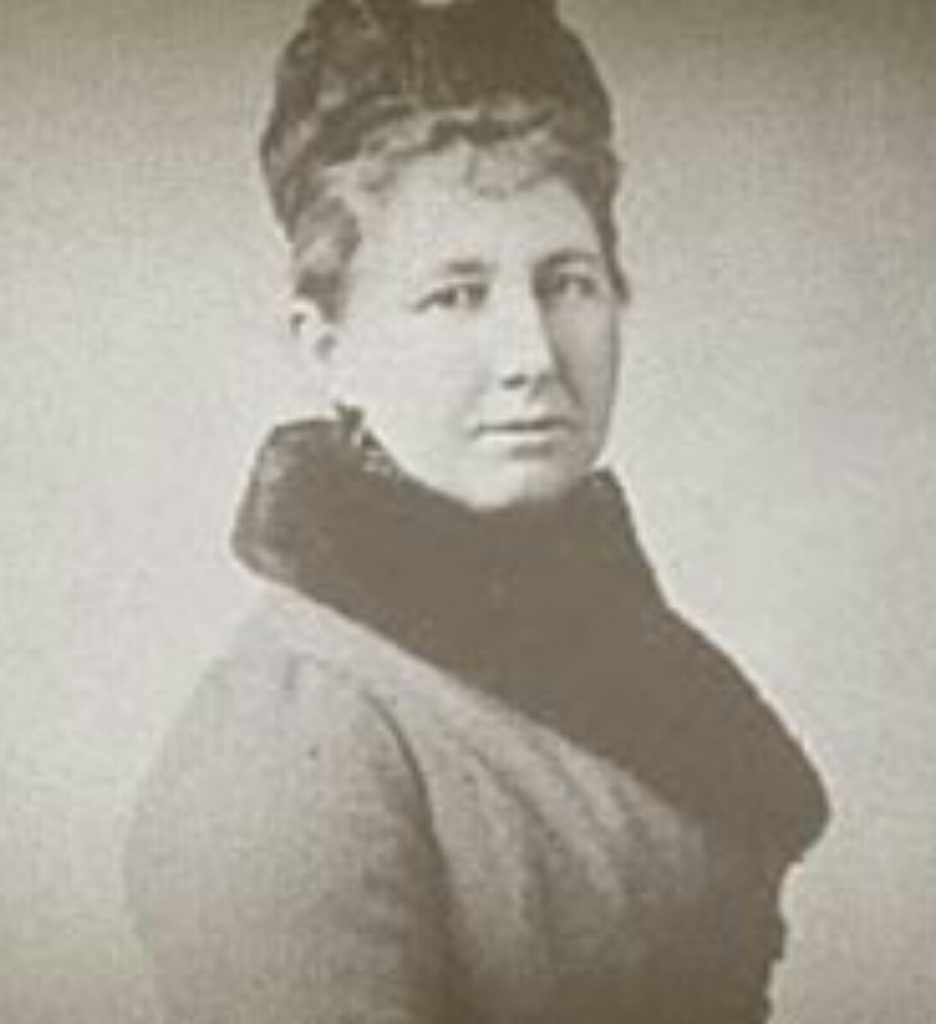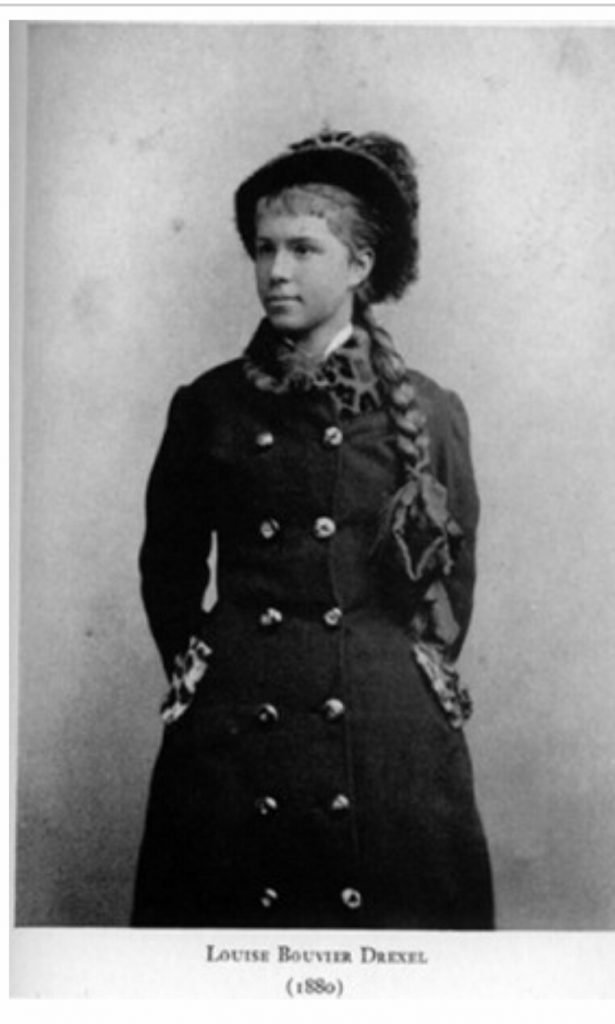By Anthony Charette
Spiritual Tug-of-War

Bishop Martin Marty O.S.B. of Saint Cloud, Minnesota, Dakota Territory. He encouraged St. Katharine’s generosity toward the Indian Missions.
Katharine’s correspondence in this period clearly indicates a frustrated soul on fire with love of God and trying to fly over all the obstacles standing in the way of her vocation. Bishop O’Connor, still her spiritual advisor, initially advised caution and patience. Eventually, he revealed his conclusions: She could best serve God by living in the world and directing her activities with the intelligence and competence she had already exhibited. He felt that in a convent she would be directed by others to the detriment of her apostolate.
Dissatisfied with this response, Katharine replied that she wanted to sacrifice her feelings, her inclinations, her appetites, against which all nature rebels. But, by conquering the flesh, the soul lives. She went on to explain that the attainment of perfection should be our chief employment in life. But the Bishop would not relent. He feared that she, coming from such an elegant lifestyle, might lack the strength to endure the sacrifices that life in a religious Order called for.
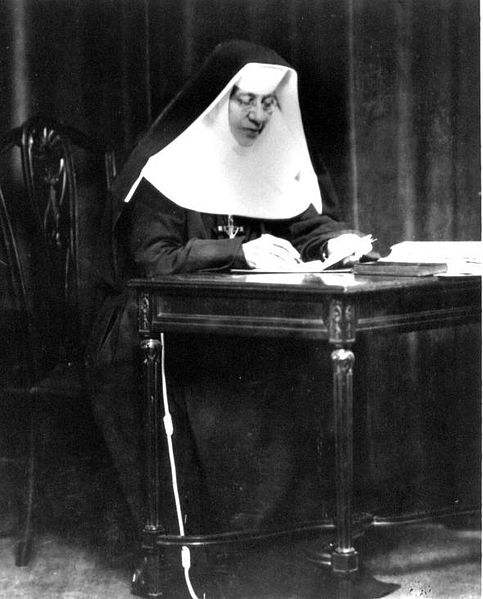 In the midst of this epistolary tug-of-war, Katharine and her two sisters traveled to Europe. While they were in Rome, Pope Leo XIII granted Katharine a private audience. She explained to the Pontiff that she desired to enter a contemplative religious congregation, but that she also was aiding Bishop O’Connor and numerous missionaries in alleviating the sad condition of the North American Indians. She feared that if she entered a contemplative Order she would be abandoning those God wanted her to help. What should she do?
In the midst of this epistolary tug-of-war, Katharine and her two sisters traveled to Europe. While they were in Rome, Pope Leo XIII granted Katharine a private audience. She explained to the Pontiff that she desired to enter a contemplative religious congregation, but that she also was aiding Bishop O’Connor and numerous missionaries in alleviating the sad condition of the North American Indians. She feared that if she entered a contemplative Order she would be abandoning those God wanted her to help. What should she do?
Pope Leo listened attentively. He no doubt knew she was a member of a wealthy banking family and could obviously see that she was offering herself to God through a life of prayer. He thought for a long minute and then replied, “But why not be a missionary yourself, my child?” It was not the answer she was looking for. Enigmatic in some respects, the Pope’s answer nevertheless did point to her future course.

St. Francis de Sales High School. It was the girls high school. Operated from 1899 to 1970. It was built and operated by St. Katharine Drexel and the Sisters of the Blessed Sacrament for its whole time of operation. The both schools together educated 15,000 Indian and Black students.
When the Drexel sisters returned to the US, Fr. Stephan repeatedly invited them to come out West and see for themselves the desperate needs of the Indian missions. They agreed and experienced a type of travel totally opposite their first-class accommodations in Europe. Across the remote and trackless West, the trails were hard and rough. No hotels nor restaurants appeared for their convenience. They traveled like pioneers, accepting rough sleeping quarters and what food they could get.
At the second stop, Holy Rosary Mission, they were introduced to the famous Sioux chief Red Cloud, perhaps the most noble and respected Indian leader of his day. When the army sent troops into his territory in 1866 to build forts, this clever strategist put up such fierce resistance that U.S. soldiers were forced to withdraw and negotiate for peace.

Chief Red Cloud, who once expressed his gratitude to the Drexel sisters by boldly defending an Indian school they supported.
This indomitable warrior—who once returned from a war with the Crows with an arrow shot straight through him, projecting front and back—realized that the Indian had to accept White man’s civilization. The Drexels visited him at his home and presented him with a saddle and other gifts, for which he solemnly thanked them. However, he expressed even more gratitude to the three sisters for providing a school for his people, a gratitude that was expressed in action on behalf of the nuns and Holy Rosary Mission a few short years later.
In 1891, in the last outburst of Indian violence, a wild band of Sioux went on a rampage and devastated a large area that surrounded the convent and school. They burned everything that lay in their path and killed all they came across, but miraculously never harmed the mission. Red Cloud, remembering the three gracious ladies, ordered the renegades to spare the nuns and their school or he would join with the U.S. Army and oppose them.
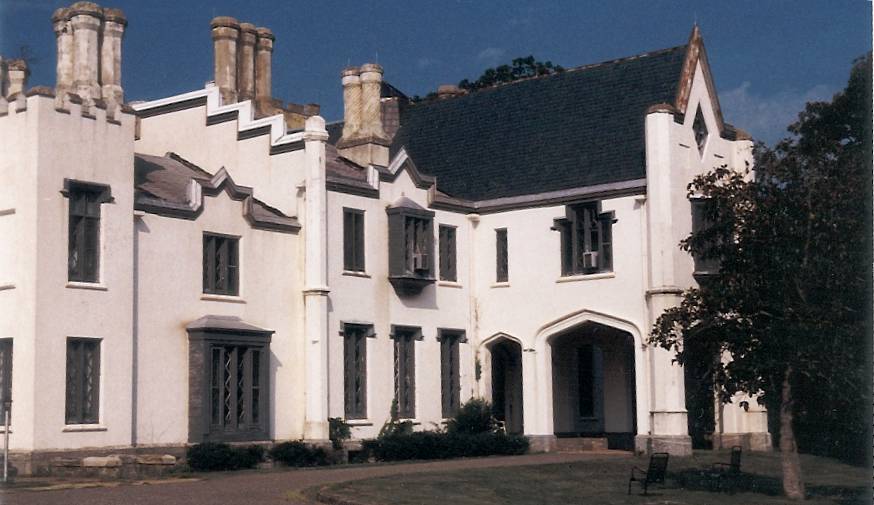
Belmead Mansion on the James, formerly was the site for St. Emma Military Academy, it operated between 1895 and 1971. The boys school was funded and operated by St. Katharine Drexel’s sister and brother in law, Louise and Edward Morrell. It is currently the main office for FrancisEmma, Inc. & is listed with the National Trust for Historic Preservation.
During the next few years, Katharine continued to collaborate with Bishop O’Connor and Fr. Stephan in providing funds for Indian Schools and to consult with the former concerning her vocation. No longer having any doubts, the bishop’s only concern was which Order would be most suitable for her to join.
It was a struggle at several missions to keep the schools staffed with teachers. The nuns of various Orders stationed there were constantly being recalled by their superiors back East for other duties. A revolving door of replacements, sometimes from other Orders, sometimes even lay temporaries, began to jeopardize the effectiveness of the schools. An obvious solution to both problems was for Katharine Mary Drexel to found her own Order of teaching missionaries.
Bishop O’Connor provided the guiding light through this second period of trial. He suggested that only a new Order would satisfy two concerns that troubled her: a profound desire for daily Communion—four times a week was the norm in Religious life at the time—and for total dedication in helping underprivileged Indian and Black children. However, only with great reluctance did she accept the enormous responsibility to direct it as Mother Superior, for she both feared the position and felt she lacked the necessary skills. Writing of the undertaking to the pioneer Bishop, she admitted that “her heart went down in sorrow” when she thought of it. “New Orders always have to pass through the baptism of the Cross.” Elsewhere she wrote privately that she intended to do the will of God by “reproducing in myself each separate agony of Our Lord…by uniting myself to the precious blood which falls from the wounds of Jesus.”
The terminal illness of Bishop O’Connor brought even more vividly to her mind the value of suffering. She wrote to the dying prelate: “Are not these the hardest and most difficult paths leading to the Divine Will? Pain brings so many anguishes…If it were in any way agreeable to us it would not be the Cross on which Our Lord hung.” Her state of soul had reached the point where it was equal to the enormous task she was about to undertake.

St. Joseph Indian Normal School. Established by the Catholic Indian Missions with funding from St. Katharine Drexel, the school taught 60 Indian boys. When the Indian School was closed, the building was named Drexel Hall. It is one of the first structures of St. Joseph’s College. Photo by Chris Light.
She entered the novitiate of the Sisters of Mercy in Pittsburgh on May 7, 1890, for two years of formation in the Religious life. One year later came the sad news of Bishop O’Connor’s death. Torrents of distress and anguish flooded Sister Katharine’s sensitive soul. Archbishop Patrick Ryan of Philadelphia, an intimate friend of both the deceased Bishop and the Drexels, attended the funeral in Omaha and then hastened to Katharine’s side. Disconsolate, the novice felt she could not continue. Archbishop Ryan offered his assistance: “If I share the burden with you, can you go on?” With renewed hope and courage, she agreed, thus forming another great partnership in her apostolate.
Less than four months later, her own sister Elizabeth also died, along with her premature child. Katharine, learning to lead others in the way of the Cross, was allowed to feel the heavy weight of her own.
When Sister Mary Katharine Drexel pronounced her vows on February 14, 1891, she founded a new congregation, the Sisters of the Blessed Sacrament for Indians and Colored People. One year later, twelve postulants received the habit. Shortly after her death in 1955, the number had increased to 545. At the time of her profession, the devout philanthropist had either established or supported over fifty missions in fifteen Western states or territories. With missions among the Pueblos in New Mexico and the Navajos in Arizona, she began to supply them with dedicated and well-trained nuns from her own Order.
Although the Wild West was slowly being tamed, a certain danger still lurked about. Mother Katharine felt that the mission in Arizona lacked sufficient acreage for subsistence farming, so she bought an additional parcel. Soon after, an extortionist appeared on the scene, pretending to be the real owner and demanding that the land be returned or at least it equivalent in cash. He returned a second time making the same demand. Meanwhile, the Mother Superior had hired a highly recommended Navajo named Charley to plow the land. When the adventurer appeared a third time to intimidate the nun, the Navajo left his plow and began to walk towards him. The cruel opportunist immediately fled. It seems that Navajo Charley was the best shot in Arizona.
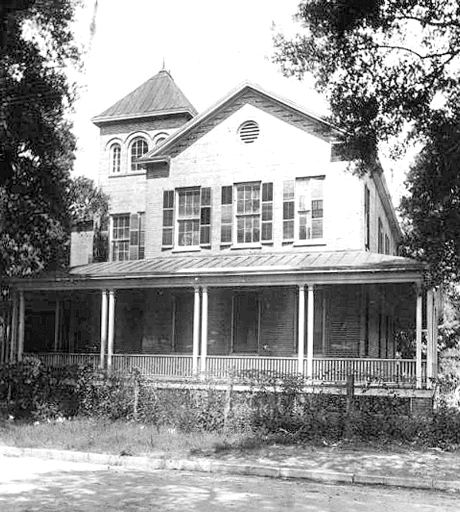
St. Benedict the Moor School, St. Augustine, Florida. An all black Catholic school built in 1898 and funded by St. Katharine Drexel.
The third Drexel sister, Louise Drexel Morrell, a great philanthropist in her own right, had already donated large sums of money to help educate the black poor at a time when little education was available to them. When her Order began to graduate trained teachers, Mother Katharine established schools in the South for this underprivileged minority. One can easily imagine that during the early decades of this century this caused a fire storm of opposition, an opposition which she heroically braved. Using tact, courage, and determination, the missionary nun quietly prevailed.
In Beaumont, Texas, the strong opposition led by the Ku Klux Klan turned into violence. Terrorists dragged a peaceful old Black man from his home and beat him, and then threatened a Josephite priest who was in charge of the school as the next victim. The Mother Superior hastened to the scene. The following day, while the Klan was in a nearby meadow planning new attacks, a terrible thunder storm raged across the area. A bolt of lightning snapped out of the clouds and killed the Klan leader, thus dramatically resolving that particular problem.
Final Years of a Long Life
Mother Katharine was 77 in 1935 and, until then, still maintained an exhausting work load. As the circle of her schools and missions widened, her journeys grew with them. Yet, despite the missions that she administered, she always observed the poverty of her rule, traveling, unless otherwise ordered by her bishop, in the cheapest accommodations available. Whenever new convents and schools were established in the poorer sections of the larger cities, the Mother Superior herself supervised the renovation and participated in the cleaning until her age caught up with her. After suffering a heart attack, she was ordered by her doctor to drastically curtail her work schedule in an effort to prolong her life and safeguard her community. She answered: “God could do the work without any of His creatures.” The doctor laconically replied: “Yes, but He rarely does.”
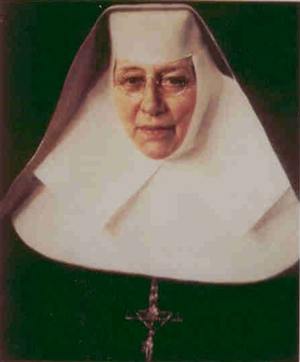 Even simple duties placed too much of a strain on her weakened heart and she succumbed to another attack in 1936. Following that, she retired to the contemplative life she had desired in the first place. Now a simple cloistered nun, she spent the next twenty years in prayer and meditation for the Church she loved so much, for her Order, and for the souls most in need, dying on March 3, 1955.
Even simple duties placed too much of a strain on her weakened heart and she succumbed to another attack in 1936. Following that, she retired to the contemplative life she had desired in the first place. Now a simple cloistered nun, she spent the next twenty years in prayer and meditation for the Church she loved so much, for her Order, and for the souls most in need, dying on March 3, 1955.
Taken from Tradition, Family and Property, November-December 1994, Pp. 36-39.
[Mother Mary Katharine Drexel was beatified on September 2, 1988 and canonized on October 1, 2000.]
